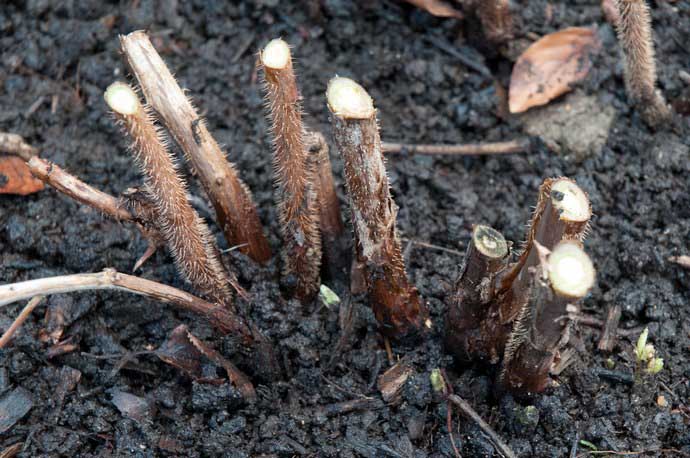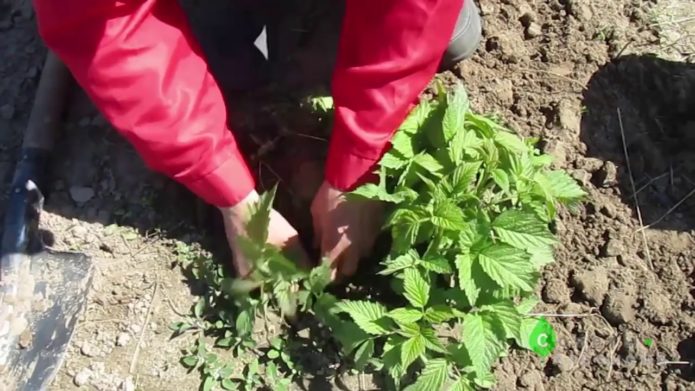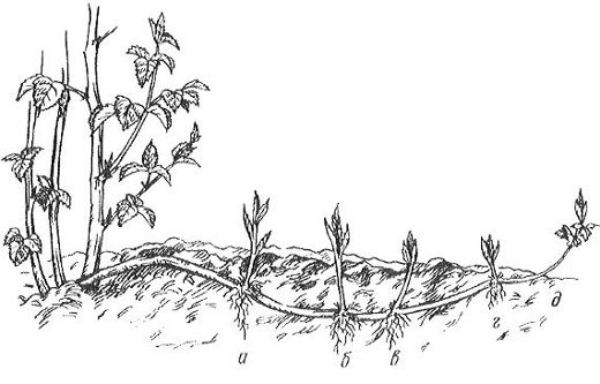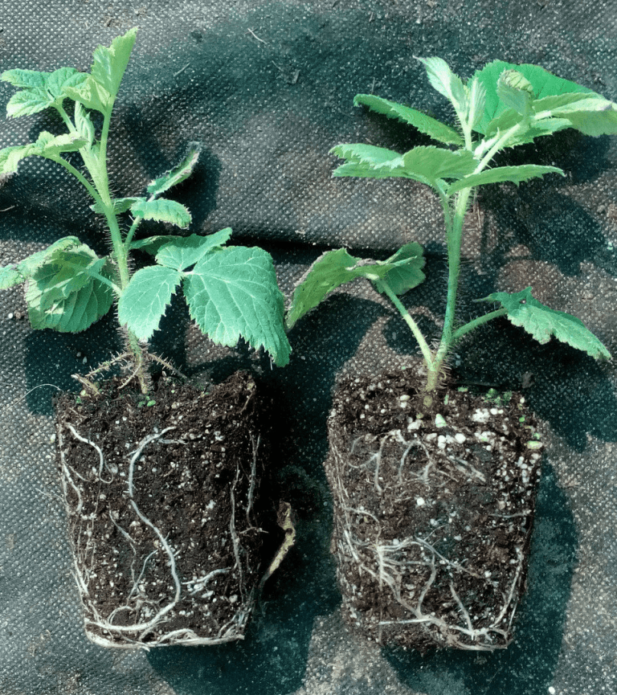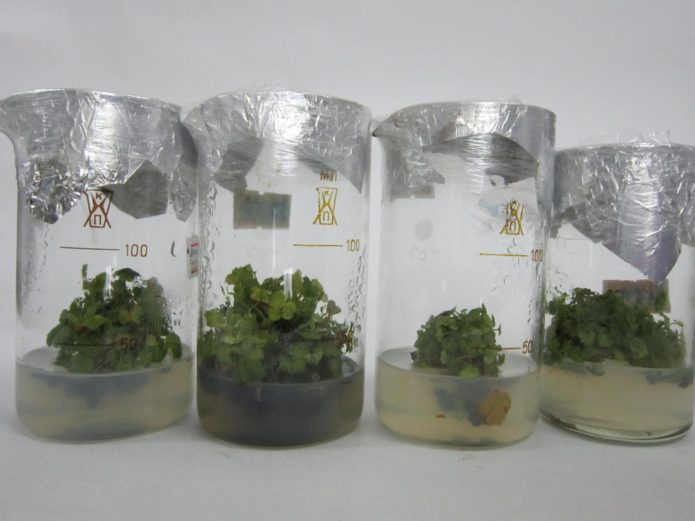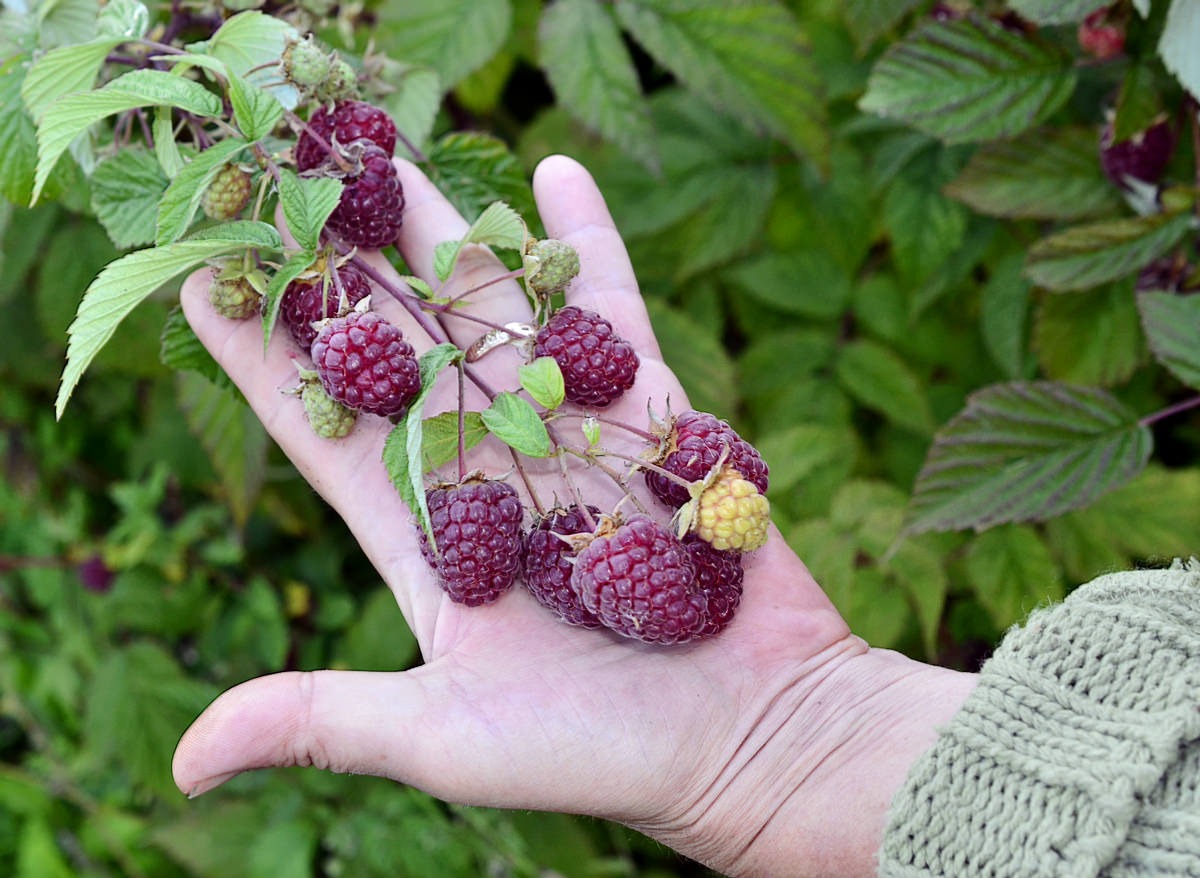Among gardeners, disputes about which raspberries are better: regular or remontant do not subside. Undoubtedly, both have their own advantages and disadvantages. The main methods of reproduction of remontant raspberries are the same as the usual ones, but their implementation has its own characteristics.
Content
What is remontant raspberry
Repairing varieties exist in many plant species: both berry bushes and flowers. The term "remontability" means the duration or continuity of flowering and fruiting over a long period. Repaired raspberries bloom and bear fruit from the beginning of summer until the very onset of frost. The harvest is given by both last year's shoots (if the gardener leaves them in the winter) and annuals. True, in recent years, many have grown berries so that the shrub gives all its strength to the harvest on new shoots, and in the fall they are mowed right near the ground.
The advantages of remontant raspberries over the usual are as follows:
- the possibility of getting the first harvest in the first year after planting;
- ease of shelter for the winter (since annual shoots are often cut off);
- less susceptibility to pest attacks;
- higher overall yield and longer production of berries over time.
Many remontant varieties have larger berries than ordinary ones, and in autumn, when there are few fruiting shrubs left in the garden, they seem to be tastier. Although, of course, it all depends on the choice of the variety and the correct care. Most of the varieties of this variety of raspberries give few offspring, in connection with which reproduction presents certain difficulties. In general, and this applies to different crops, remontants have no less breeding methods than traditional varieties.
Reproduction methods of remontant raspberries
Like the raspberries familiar to gardeners, remontant can grow in one place for many years, annually renewing the aboveground part. But the time comes to start a new plantation, and if the gardener likes the variety, there is no point in buying expensive seedlings, because you can get planting material from your site. True, this is somewhat more difficult to do than in the case of ordinary raspberries.
Some varieties of remontant raspberries practically do not form replacement shoots, while others give very few of them. From the point of view of thinning raspberries, this is a plus, but the most popular breeding method (dug out what has grown and transplanted) is not suitable here. Therefore, after observing your plantings for several years, you should choose the simplest breeding method, especially since you can get planting material at almost any time: some methods are suitable in spring, others in summer, and others in autumn.The optimal breeding method is chosen depending on the variety, season, age of the plant, and the preferences of the owner.
Reproduction of remontant raspberries by cuttings
Propagation by cuttings is often the main method of propagation of remontant raspberries, especially for varieties with little or no growth. Cuttings can be cut both from the aerial part and from the roots.
Root cuttings
To obtain root cuttings in the autumn period, carefully rake the ground with a pitchfork and hands from the roots of a strong, fruiting bush and gain access to the root system. Rather powerful roots with numerous branches lie under the very surface of the soil. If you cut off no more than 15% of them, the bush will hardly notice it. Choose strong, healthy lengths of about 10 cm and a diameter of at least 3 mm.
Cut cuttings are buried in a well-fertilized seedbed to a depth of about 10 cm, well watered and mulched for the winter. In the spring, sprouts should appear, and by the fall, seedlings will be ready from them.
Alternatively, the cuttings are sent to winter in the cellar in pots with soil, in the spring they are taken out of the cellar and, as sprouts appear, they are transplanted into the garden bed.
When implementing this method, it is important not to destroy the bush, you need to dig out the roots slowly, but cut off only a small number of them.
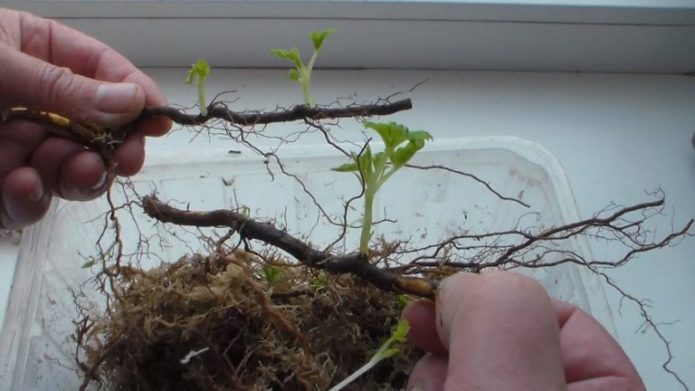
Shoots will grow directly from the cuttings, but it is better not to see this and once again planted root cuttings do not get out of the ground
Stem cuttings
In autumn, you can cut cuttings from the aerial part: when pruning bushes, it is easy to choose the strongest shoots. Such cuttings 30–50 cm long should have at least three well-developed buds. After holding the cuttings for half an hour in water, they are immediately planted in the prepared bed obliquely, burying about half.
If the nursery is well watered, and insulated for the winter (with coniferous spruce branches or spunbond), by the spring at least half of the cuttings should successfully root and give leaves. In autumn, the grown seedlings are planted in a prepared place.
Video: saplings of remontant raspberries from stem cuttings
Reproduction by dividing the bush
Replacement shoots in remontant raspberry bushes, as a rule, grow within an adult bush, rarely moving away from it, so the division of the bush must be done very carefully. This is done in the spring: it is necessary to wait until new shoots grow to a height of 10-15 cm. If the number of shoots in the bush exceeds 5-8, it should be divided.
It is very good if the bush has grown so much that it does not need to be dug out entirely to divide it into parts. In this case, proceed as follows.
- A few hours before the operation, the plant is well watered.
- Between the part of the bush that is left and the part that they want to separate, they stick a sharp shovel deeply, trying to cut the roots connecting these parts.
- From all sides of the separated part, they deeply dig it in and take it out of the ground, trying to leave as much soil as possible on the roots. If it is not possible to leave the soil, the roots are immediately dipped into a clay talker.
- The separated part is immediately planted in a pre-prepared hole with almost no deepening and watered well.
If this method is not feasible due to the fact that young shoots are located very closely, you have to carefully dig up the entire bush. In such a situation, in order to understand the root system, one cannot do without shaking off the soil. Divide the bush with a knife and pruner so that in each part to be divided there are 2-3 shoots with well-developed roots. New bushes are immediately planted in a new place.
Reproduction by root suckers
Despite the fact that reproduction by offspring is considered the main and even the easiest way to reproduce raspberries, this is not the case for most remontants. They almost do not give offspring that would grow away from the parent bush.Nevertheless, there are varieties propagated in this way (Firebird, Orange Miracle, Atlas, etc.), so the method has a right to exist. The root offspring is, in fact, an almost new plant, with its own root system, but has not yet completely separated from the mother bush.
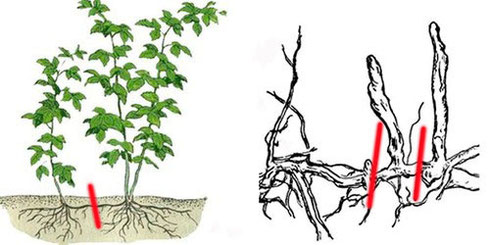
In ordinary raspberries, offspring appear quite far from the bush; unfortunately, this rarely happens in remontant varieties
Root offspring are usually separated in autumn, but you should take a closer look at them (if any) in summer. If, as the offspring appear, clearly weak and twisted are found, it is better to destroy them immediately so that no energy is wasted at the mother bush. Strong shoots are left and looked after all summer: they water, loosen the soil, remove weeds. As soon as it seems that the offspring are ready for transplanting (usually it is the end of summer or September), they are carefully dug out and immediately planted in a permanent place. However, in the fall, you can even plant raspberries, which did not show up with their outer part, which is shown in the next video.
Video: reproduction of remontant raspberries by root layers
To enhance the shoot-forming ability, you can cut out the central part with the roots up to 20 cm in diameter from a strong 2-3-year-old bush in early spring. If it is immediately transplanted to a new place, it will easily take root. But the bottom line is that the "offended" bush from the remains of disturbed roots after such a procedure gives many new shoots, and they can grow at some distance from the center of the bush.
Propagation by horizontal layers
Reproduction by layering, widely used for currants and gooseberries, is used less often in raspberries, but it is also quite an effective technique. True, for this, part of the stems in the fall must be left on the plant in order to bend them to the ground in early spring.
Such an operation can be carried out in the summer, even before the flowers appear on the young shoot, but its success is not so guaranteed.
Layers are performed where the sun does not bake, that is, the most shaded part of the raspberry tree is chosen. The folded stems should be strong, but not breaking when bent. It is necessary to choose not bare shoots, but at least with the rudiments of lateral branches: they will be left outside and give rise to new bushes. Proceed as follows.
- In the place intended for rooting, they fertilize and dig up the soil well, prepare a groove 10-15 cm deep. Water the soil well.
- Carefully bend down the shoot and cut off the side branches that grow to the sides and to the ground. Near the place of growth of the left branches, scratches are made on the stem to facilitate root formation.
- Put the shoot in a groove, fix it with wire brackets or small stones, sprinkle it with soil. Leave out the sticking out branches and the top of the shoot (15-20 cm). The top, if possible, should be directed up and tied to a small peg.
- Water the cuttings and mulch the soil.
When the operation is carried out in the spring, the seedlings will be ready by the fall: they must be dug up, divided and planted in a place prepared in advance. If rooting began in the summer, leave the entire structure until next fall.
Propagation of raspberries by seeds
Seed propagation is used very rarely, mainly for the purpose of obtaining new varieties. This applies to both conventional and remontant varieties. This is due to the complexity of the procedure and its duration. In addition, with such a reproduction, re-grading is possible: only about half of the obtained seedlings will meet the expected requirements. The work progress is as follows.
- Seeds are harvested from the very first and largest berries. They are allowed to fully ripen, knead in any available way and remove the pulp.
- The dried seeds are stored at a low positive temperature until winter, after which the stratification process begins.
- The seeds are soaked, changing the water daily, for 5-6 days.Mixing them with clean coarse sand, return to the refrigerator for 50-60 days.
- After washing the seeds, they are disinfected in a weak solution of potassium permanganate or bleach and sown in a box. Sowing depth - no more than 0.5 cm, soil - sand and peat mixture.
- At room temperature in a bright place and constantly moist soil mixture, no more than half of the seeds emerge. They are looked after like vegetable seedlings, including the picking process.
Two years pass from sowing seeds to transplanting seedlings to a permanent place.
Video: seed reproduction of raspberries
Microclonal reproduction
It is practically useless to engage in microclonal reproduction at home: this requires special equipment, therefore, the technique is the prerogative of large agricultural enterprises and serious laboratories. With such reproduction, it is guaranteed that completely healthy seedlings are obtained, all the prehistory associated with the presence of diseases is "erased". In addition, the productivity of the method is truly colossal.
The initial cultivation of seedlings is carried out in nutrient media, but even then bringing them to a viable state is carried out in well-prepared greenhouses with fogging equipment. As a result, the cost of such reproduction is very high. An approximate work plan (in simplified terms) looks like this.
- At the initial stage, the necessary pieces of tissue are separated from healthy plants and placed in a nutrient medium, where they are kept for about a month under constant external conditions: temperature and light.
- Microscopic cuttings obtained from the isolated tissues are divided into parts and cultivation in test tubes is continued for another month.
- Miniature plants with root rudiments are transplanted into peat pots.
- In pots, seedlings are brought to a viable state for 1.5-2 years, after which they are transplanted into open ground.
In general, reproduction of remontant raspberries is somewhat more difficult than traditional ones, but nothing supernatural is required for this. You need certain skills in gardening and knowledge of the characteristics of this variety of berry culture.
